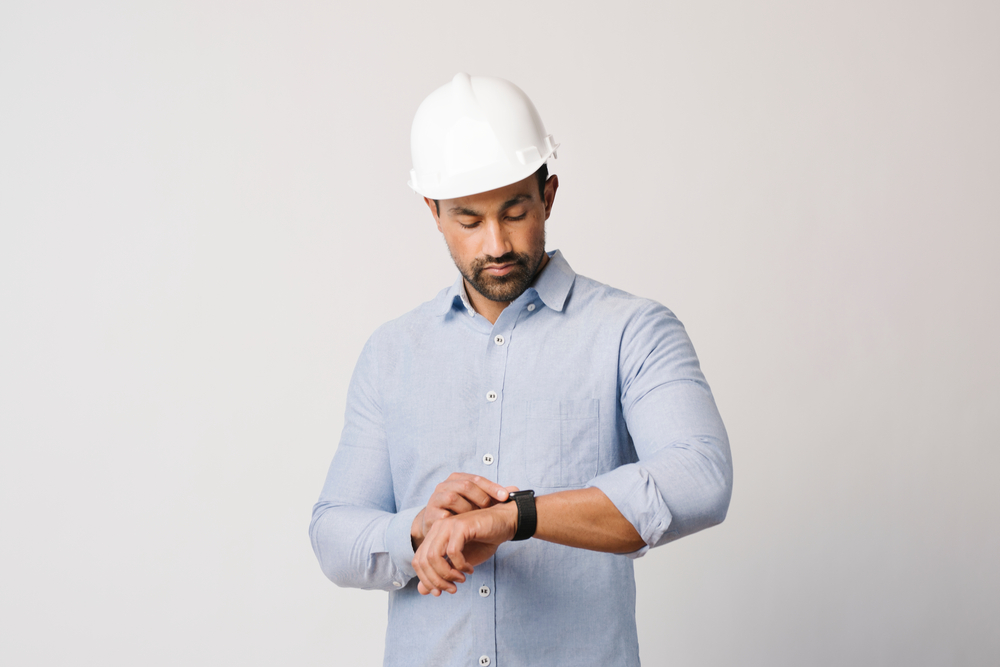Back to Basics is a weekly feature that highlights important but possibly overlooked information that any EHS professional should know. This week, we examine wearables and smart PPE, and their potential impacts on the lives and work of safety professionals.
All kinds of new technologies are currently coming to the forefront in the EHS industry, ranging from new artificial intelligence (AI) algorithms that can help with data collection to devices that monitor employee vital signs. Wearables and smart PPE are entering the field with EHS professionals, and it is important for employers to understand their uses and how they can contribute to better worker safety.
Definitions
According to the NIOSH Science Blog, wearable technologies include accessories and clothing that incorporate advanced electronic technologies, often with smartphone or “internet of things” (IoT) connectivity that are being used for monitoring occupational safety and health risk factors.
Smart PPE, according to Eastern Kentucky University (EKU), are “wearable pieces of equipment, such as helmets, that connect to the internet or Bluetooth and deliver safety information to the wearer or others in the field.” They allow the user to collect data, adjust to the conditions of their work environment, and warn the user of hazards, EKU says.
Benefits and uses
As wearables become more popular, people are finding more benefits and uses for them, especially in safety. According to NIOSH, many of the devices being used to help with personal fitness can also be used to monitor workplace health and safety risk factors.
One of the benefits of wearables is monitoring fatigue. The National Safety Council (NSC) says that the three common types of monitoring capabilities include the following:
- Electroencephalography (EEG) sensors to monitor brain activity relative to fatigue
- Monitoring for visual cues and microsleeps
- Using sleep and activity data to calculate fatigue risk levels
The NSC also ran a safety technology in the workplace survey that found that “56% of mining workers said wearable monitors used to track fatigue and health risks were the most relevant technologies in their industries for mitigating serious injuries and fatalities.” That same study also found that “51% of utility workers said wearable monitors used to track fatigue and health risks were the most relevant technologies in their industries for mitigating serious injuries and fatalities.”
Smart PPE also has several different uses at worksites, according to EKU. Earmuffs and facemasks can be used to improve communication in spaces where there is loud noise or low visibility. Smart tech sensors can connect with cooling and heating elements and adjust to temperatures, both internal and external. Lockout devices can prevent equipment injuries with laser-enabled stop devices, and clothing sensors can monitor environmental elements including gas, chemicals, heat, sounds, and impacts.
Many of these devices are capable of notifying supervisors when the employee is in danger, says EKU, and Bluetooth allows them to gather data and connect to other devices in real time. There are smart tech helmets with GPS chips that allow supervisors to track employees on large worksites, and smart safety eyewear that can deliver data in a display at the corner of the lens. There are also smart safety globes with near-field communication (NFC) chips built into them that allow users to connect with information on their phone or tablet.
Construction
Construction sites are very dynamic workplaces with ever-changing hazardous conditions, and according to NIOSH, nearly 20% of all work-related fatalities in any given year occur on construction sites. Wearables are currently being developed, tested, and used in a variety of ways in construction to help prevent injuries and fatalities.
Proximity detection and alert systems, when used as wearable technology, are reliable and effective and have the potential to warn workers on the ground or those operating equipment when moving hazards or heavy construction equipment are near, says NIOSH. Physiological status monitors can reliably collect worker data outside and warn about the potential for heat stress, while environmental sensors can be used to monitor air quality, carbon monoxide, hydrogen sulfide, gas leaks, temperature, humidity, and noise.
Construction workers are also at a high risk for musculoskeletal disorders (MSD), and exoskeletons are capable of preventing them. Exoskeletons, according to NIOSH, are assistive devices that can be categorized as active or passive. Active exoskeletons involve powered force and torque generating elements while passive exoskeletons support a posture or movement using unpowered mechanisms.
Exoskeletons can play a similar role to PPE in situations where fixed engineering controls are not possible, and their cost, portability, and potential effectiveness in preventing work-related MSDs has made exoskeletons a point of interest for many employers over the last several years.
Standards
While OSHA has no specific standards for wearables or smart PPE, employers are still responsible for making sure the equipment used at a jobsite is compliant with existing standards. The applicable standards for wearables and smart PPE include OSHA’s general standards for PPE, eye and face protection, respiratory protection, head, foot, and hand protection, and any other standards related to safety equipment.
Employers are always required to remain compliant, while reporting the necessary data and providing the necessary documentation within these standards. Wearables and smart PPE also introduce issues of data and worker privacy, and so employers should take into consideration OSHA’s standards regarding worker privacy as well while implementing new technologies in the workplace.

